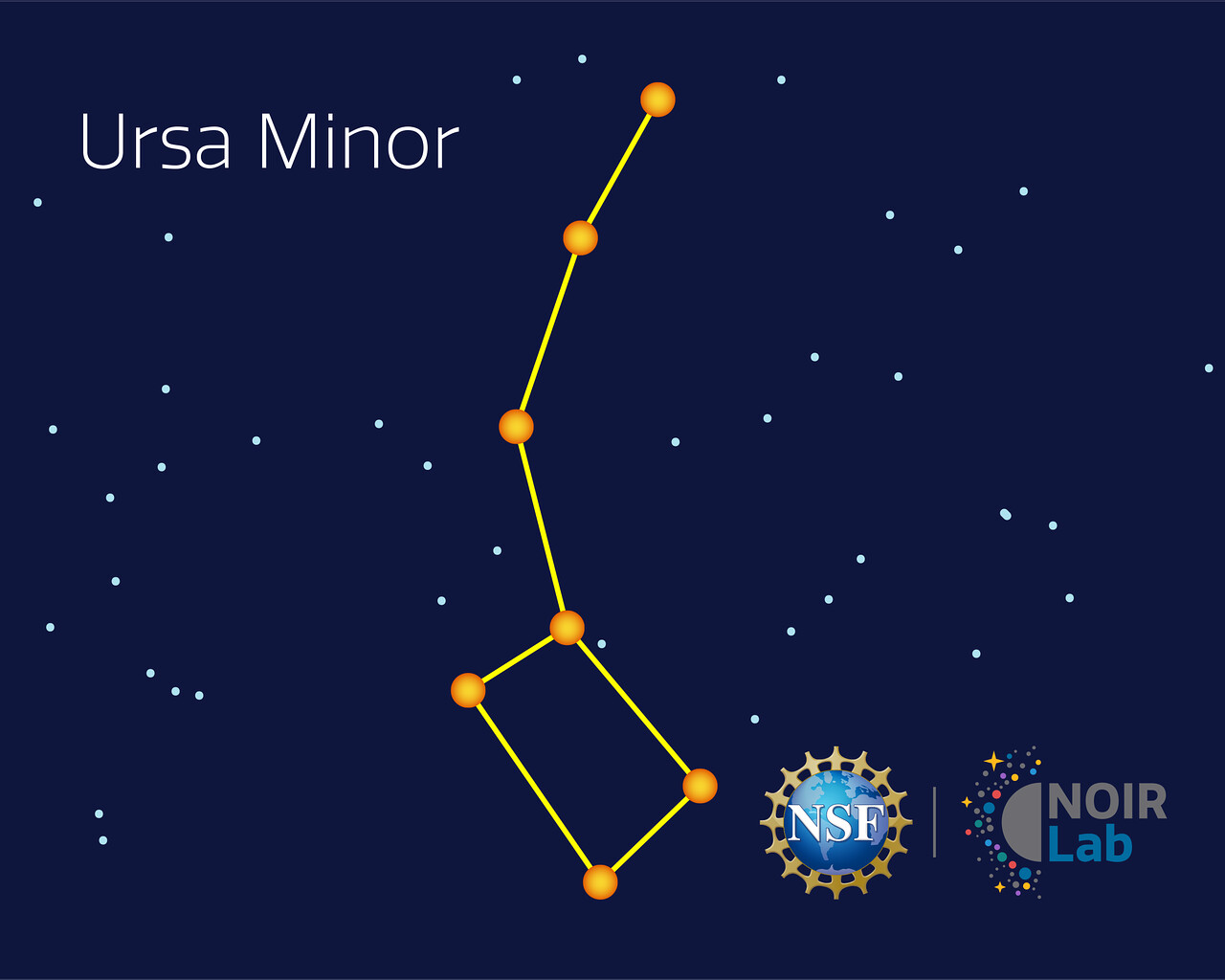Ursa Minor
Origin
Ursa Minor is a constellation in the northern hemisphere. The latin name means ‘Lesser Bear. It's is informally know as the Little Dipper. Ursa Minor contains the star Polaris, also known as the Pole Star. Polaris currently lies very close to the north celestial pole and all stars in the sky appear to rotate around Polaris. Polaris has been used in celestial navigation for undreds of years.
Bright Stars
Polaris, or Alpha Ursae Minoris, is the brightest star in the constellation, varying between apparent magnitude 1.97 and 2.0.
Beta Ursae Minoris has an apparent magnitude of 2.08.
Gamma Ursae Minoris has an apparent magnitude that varies between 3.04 and 3.09.
Eta Ursae Minoris is a 4.95-magnitude star.
Epsilon Ursae Minoris has an apparent magnitude of 4.35.


 Photo of the constellation Ursa Minor produced by NOIRLab in collaboration with Eckhard Slawik, a German astrophotographer.
The annotations are from a standardized set of 88 western IAU constellations and stick figures from Sky & Telescope. Please find here a non-annotated version of the image.
Photo of the constellation Ursa Minor produced by NOIRLab in collaboration with Eckhard Slawik, a German astrophotographer.
The annotations are from a standardized set of 88 western IAU constellations and stick figures from Sky & Telescope. Please find here a non-annotated version of the image.
Credit: E. Slawik/NOIRLab/NSF/AURA/M. Zamani
Notable Objects
Ursa Minor has few bright objects visible to amateur astronomers. NGC 6217 is an 11th-magnitude barred spiral galaxy about 67 million light-years distant.



